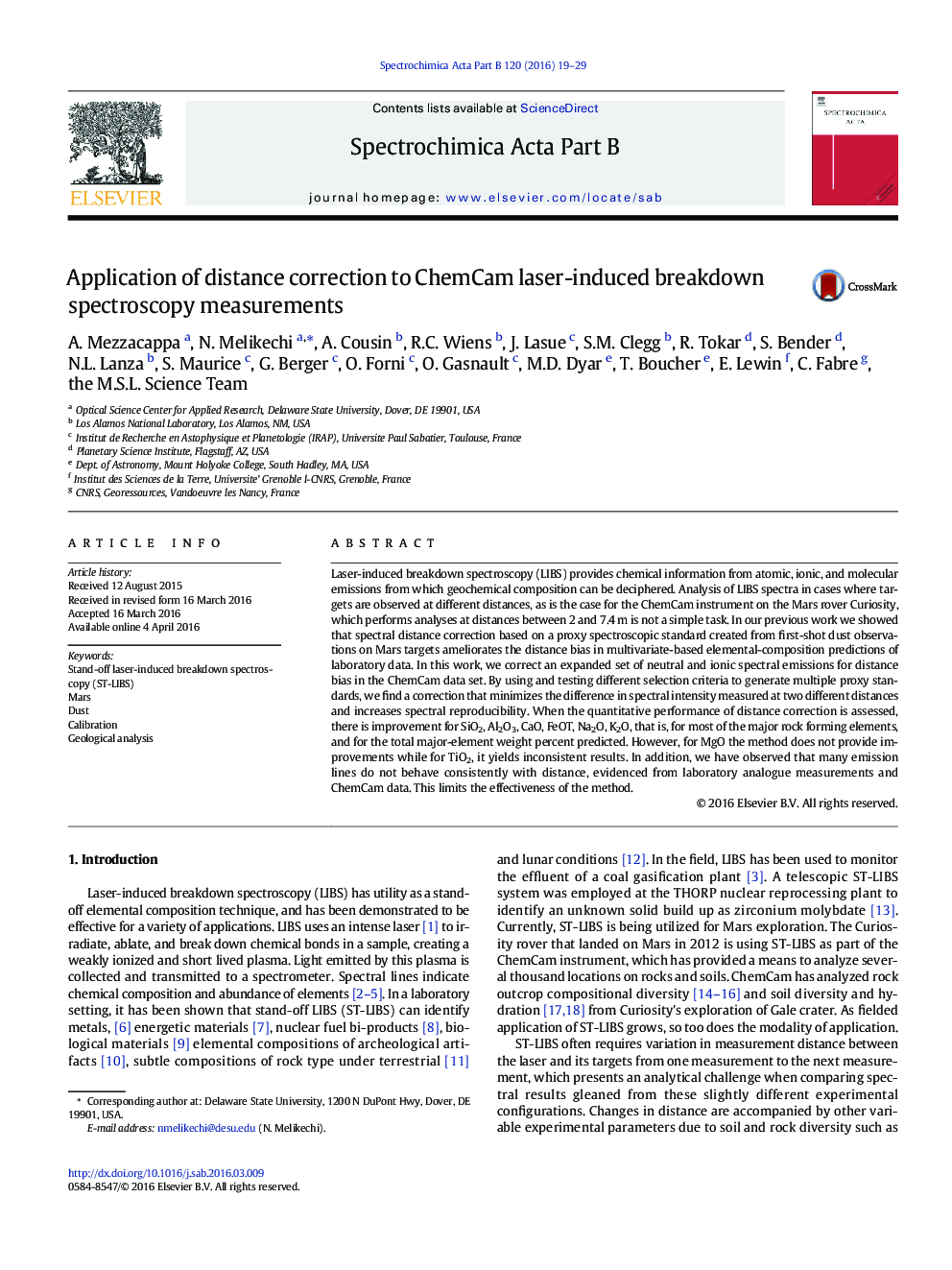| Article ID | Journal | Published Year | Pages | File Type |
|---|---|---|---|---|
| 1239657 | Spectrochimica Acta Part B: Atomic Spectroscopy | 2016 | 11 Pages |
•Dust proxy standard method for distance provides partial correction for distance effects present in ChemCam LIBS spectra.•Emission specific distance calibration for emissions present in Martian dust spectra.•Improvement in quantitative predictions when the distance calibration curves generated from dust on Mars is applied to ChemCam LIBS data.•Greater reproducibility of spectral lines to which distance correction is applied.
Laser-induced breakdown spectroscopy (LIBS) provides chemical information from atomic, ionic, and molecular emissions from which geochemical composition can be deciphered. Analysis of LIBS spectra in cases where targets are observed at different distances, as is the case for the ChemCam instrument on the Mars rover Curiosity, which performs analyses at distances between 2 and 7.4 m is not a simple task. In our previous work we showed that spectral distance correction based on a proxy spectroscopic standard created from first-shot dust observations on Mars targets ameliorates the distance bias in multivariate-based elemental-composition predictions of laboratory data. In this work, we correct an expanded set of neutral and ionic spectral emissions for distance bias in the ChemCam data set. By using and testing different selection criteria to generate multiple proxy standards, we find a correction that minimizes the difference in spectral intensity measured at two different distances and increases spectral reproducibility. When the quantitative performance of distance correction is assessed, there is improvement for SiO2, Al2O3, CaO, FeOT, Na2O, K2O, that is, for most of the major rock forming elements, and for the total major-element weight percent predicted. However, for MgO the method does not provide improvements while for TiO2, it yields inconsistent results. In addition, we have observed that many emission lines do not behave consistently with distance, evidenced from laboratory analogue measurements and ChemCam data. This limits the effectiveness of the method.
